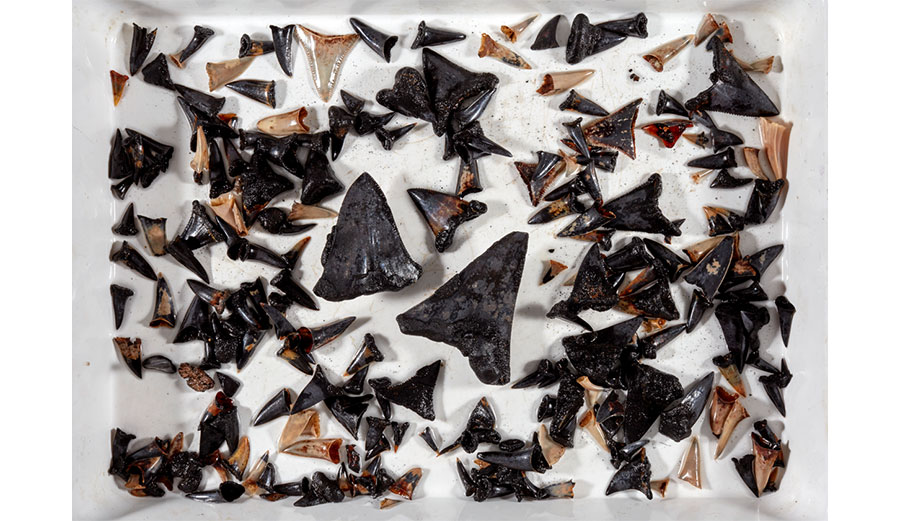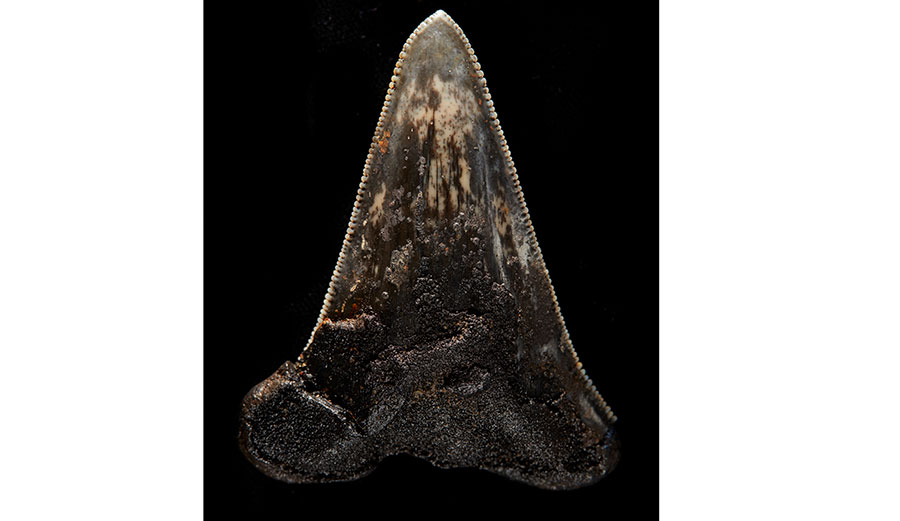
Shark teeth collected from seafloor near Cocos (Keeling) Islands. Photo: Museums Victoria//Ben Healley.
At the bottom of the sea off the coast of Australia, researchers found something pretty amazing: a graveyard full of fossilized shark teeth.
The site, a little more than three miles down, was found by a vessel operated by the Australian national science agency, CSIRO. The piles of teeth, numbering in the hundreds, were littered across the sea floor off the Cocos (Keeling) Islands. Researchers aboard the RV Investigator were doing something called a trawl survey when they found some 750 teeth, both from modern shark species and prehistoric ones.
“The teeth look to come from modern sharks, such as mako and white sharks, but also from ancient sharks including the immediate ancestor of the giant megalodon shark,” said Dr. Glenn Moore, Curator of Fishes at the Western Australian Museum, in a statement.

Tooth from megalodon ancestor collected from seafloor. Photo: Museums Victoria/Ben Healley
The megalodon, made famous semi-recently in The Meg, has been extinct for quite some time now. It was, when it was alive, “the ultimate apex predator, occupying a higher rung on the food chain than any other marine animal, living or dead.”
Although scientists still aren’t 100 percent sure just how big the megalodon could have been, IFLScience reported that recent research revealed that it would have been able to eat an orca in only five bites – so it wasn’t what you’d call small. The tooth found in the shark-tooth graveyard likely came from the jaws of an earlier version of the megalodon. It only grew to a measly 40 feet in length.
It’s not exactly clear why there were so many shark teeth found in a relatively small area, and the researchers are a little confused, but excited. “It’s incredible to think we’ve collected all these teeth in a net from the seafloor some four to five kilometers below the ocean surface,” Dr Moore said.

